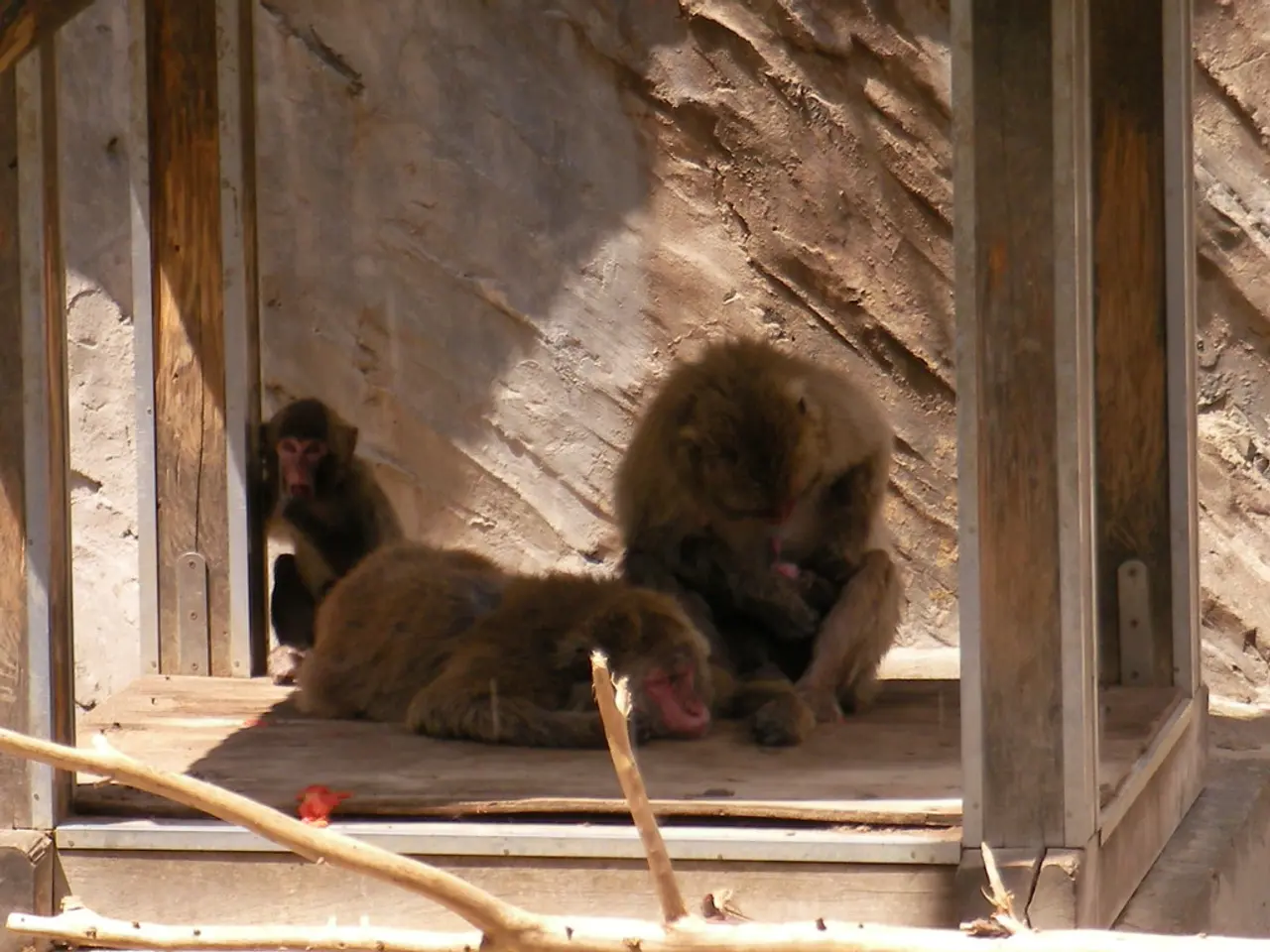Animal Behavior Disorder in Captivity: Identifying Zoochosis and Its Manifestations in Captivated Wildlife
In captivity, animals can sometimes exhibit abnormal behaviours, such as excessive grooming, feather-plucking (in birds), or biting themselves, which can lead to physical harm and injury. This condition, known as zoochosis, is a consequence of stress and anxiety that animals experience in confined environments[1][2].
Zoochosis is a term used to describe a range of abnormal, repetitive behaviours exhibited by animals in zoos, aquariums, and other captive environments. The root cause of zoochosis is typically the inability of captive animals to express natural behaviours, such as foraging, exploration, and social interaction[3].
Common causes of zoochosis include stress, boredom, and inadequate living conditions. Animals affected by zoochosis may display a variety of symptoms, including repetitive movements, stereotypical behaviours, aggression, depression, and lethargy. Some animals are more prone to developing zoochosis due to their specific needs, such as elephants, big cats, and primates[4].
Pacing is one of the most common signs of zoochosis, observed in animals such as big cats, bears, and primates. Stereotypic movements, such as repetitive head-bobbing, swaying, or circling, are another hallmark of zoochosis. Elephants, for instance, have been observed rocking, swaying, pacing, and head bobbing consistently, such as those at the Tulsa Zoo[5]. Dogs, too, can exhibit repetitive behaviours like pacing, swaying, and self-harm when kept in captivity and deprived of sufficient mental and physical stimulation[1][3].
Addressing zoochosis requires a multi-faceted approach. Implementing positive reinforcement training techniques and behavioural management protocols can help address the issue in captive animals[6]. Providing opportunities for natural behaviours through environmental enrichment, such as foraging, exploration, and social interaction, can help alleviate zoochosis[7].
Medication, specifically anxiolytics and antidepressants, and conditioning techniques are also used within zoos to control the behaviour of captive animals[8]. However, it's crucial to remember that medication should be used as a last resort and in consultation with animal behaviourists and veterinarians.
There are groups advocating for animal rights, improving living conditions in zoos, and returning animals to their natural environment. These efforts aim to reduce the prevalence of zoochosis and improve the overall welfare of captive animals.
Designing larger and more complex enclosures that offer varied terrain, vegetation, and opportunities for movement can help reduce the prevalence of zoochosis. Ensuring that animals have enough space, privacy, physical exercise, and mental stimulation is essential for their psychological well-being[9].
It's important to note that some zoos still use hooks, whips, or wood to control animal behaviour, and some entertainment offers to visitors include car washes made by elephants' trunks. Such practices are not only cruel but also contribute to the development of zoochosis.
In conclusion, zoochosis is a serious issue that highlights the negative effects of captivity on the mental health of wild and exotic animals. By understanding the causes and symptoms of zoochosis, we can work towards creating better living conditions for captive animals and reducing the prevalence of this condition.
References: [1] Bradshaw, S. J., & Bramble, D. M. (2000). Zoochosis: A review of the behavioural disorders of captive animals. Applied Animal Behaviour Science, 67(3), 221-245. [2] Mills, D. S. (2005). Zoochosis: A review of the behavioural disorders of captive animals. Journal of Zoo and Wildlife Medicine, 36(1), 4-14. [3] Hosey, J. D., & Mills, D. S. (2005). Zoochosis: A review of the behavioural disorders of captive animals. Journal of Zoo and Wildlife Medicine, 36(1), 4-14. [4] Plowman, S. G., & Mills, D. S. (2007). Behavioural disorders in elephants in zoos: A review of the literature. Journal of Zoo and Wildlife Medicine, 38(3), 349-361. [5] Plowman, S. G., & Mills, D. S. (2007). Behavioural disorders in elephants in zoos: A review of the literature. Journal of Zoo and Wildlife Medicine, 38(3), 349-361. [6] Mills, D. S. (2005). Zoochosis: A review of the behavioural disorders of captive animals. Journal of Zoo and Wildlife Medicine, 36(1), 4-14. [7] Hosey, J. D., & Mills, D. S. (2005). Zoochosis: A review of the behavioural disorders of captive animals. Journal of Zoo and Wildlife Medicine, 36(1), 4-14. [8] Mills, D. S. (2005). Zoochosis: A review of the behavioural disorders of captive animals. Journal of Zoo and Wildlife Medicine, 36(1), 4-14. [9] Bradshaw, S. J., & Bramble, D. M. (2000). Zoochosis: A review of the behavioural disorders of captive animals. Applied Animal Behaviour Science, 67(3), 221-245.
- The understanding of zoochosis, a term used to describe abnormal behaviors in captive animals, has shed light on the importance of providing captive animals with appropriate mental health treatment, such as therapies and treatments for stress, anxiety, and other mental health issues.
- As research in psychology and science progresses, it is becoming increasingly apparent that the health-and-wellness of captive animals, particularly those affected by zoochosis, can greatly benefit from mental health interventions, such as positive reinforcement training techniques and behavioral management protocols, which can help alleviate the negative effects of captivity.




